This was published 5 months ago
The moment Jim closed his eyes – and exposed Ambulance Victoria’s ‘festering sore’
By Jewel Topsfield and Henrietta Cook
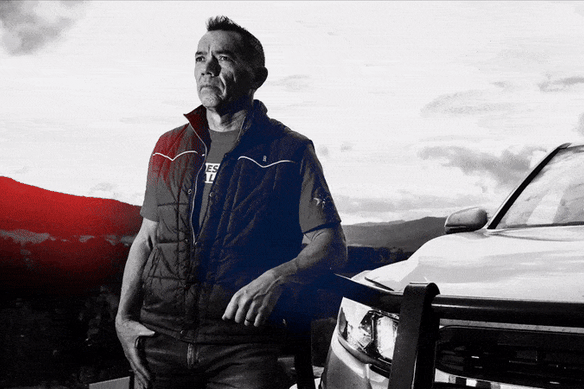
Veteran Ambulance Victoria paramedic Jim Avard.Credit: Jason Robins/Tom Compagnoni
Veteran paramedic Jim Avard had been working for 18½ hours when he fell asleep at the wheel.
His shift started at 7am on June 26. He was about to knock off when he was dispatched from Wangaratta Hospital to a job in Corowa, almost 50 kilometres away.
“I had never done a job in NSW before,” he says. “I was in disbelief, saying to the duty manager I had done 14½ hours already.”
But it was a code one – patient short of breath – and Avard felt there was little option but to go. On the way home, he decided to stop for 20 minutes to assist an elderly man with chest pain.
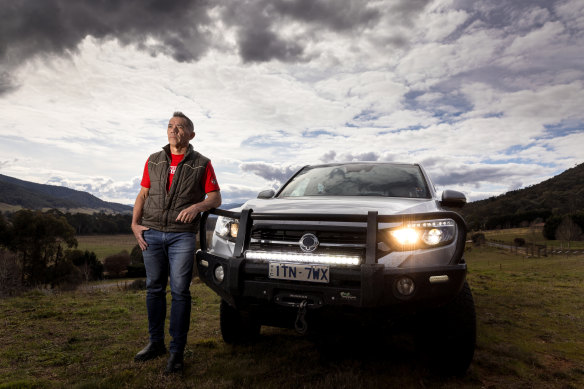
Paramedic Jim Avard rolled his ambulance after falling asleep at the wheel, 18 hours into his shift.Credit: Jason Robins
“It was a long, long day.”
At 1.15am, Avard dropped his colleague off at his car in Myrtleford. He headed for home, vowing to take a 10-hour fatigue break. But Avard never made it. Four hundred metres from his driveway, he nodded off and the ambulance he was driving smashed into a ditch, flipping on its side. Avard, who was suspended midair by his seatbelt, was flown to the Royal Melbourne Hospital.
“I was lucky I wasn’t hurt or killed, and I was lucky I was alone,” Avard says. “I’ve got niggly back pain and right leg discomfort, but most of my injuries, you can’t really see.”
He’s haunted by the what-ifs: what if there had been a patient in the ambulance; what if he’d crashed before dropping off his colleague. “It’s the stuff in the head that’s my issue now,” he says.
Avard’s accident after a hellishly long shift has become a lightning rod for furious paramedics, who say Ambulance Victoria is failing to provide them with a safe workplace.
They say paramedics are left dangerously fatigued from hours of involuntary overtime. They also point to a toxic workplace culture, burnout and a lack of work-life balance that is hurting marriages, families and friendships.
“I think what the crash did was ripped off the bandaid that was holding the festering sore,” Avard says.
Avard’s crash was the trigger for members to pass a vote of no-confidence in Ambulance Victoria’s executive, according to Victorian Ambulance union secretary Danny Hill.
In the aftermath of the crash, Ambulance Victoria issued a statement claiming Avard “was not working an 18.5-hour shift as alleged”.
Avard couldn’t believe it. He had supplied an incident report and says Ambulance Victoria also had the computer-aided dispatch (CAD) data.
“I had worked for them for 23 years, and when they questioned my integrity, I thought, ‘Oh man, that’s low,’” Avard says. “That was a real kick in the guts.”
Ambulance Victoria later apologised for the “framing of the statement”.
A spokeswoman clarified that the length of his shift was never doubted, but said he had not been rostered to work for 18.5 hours.
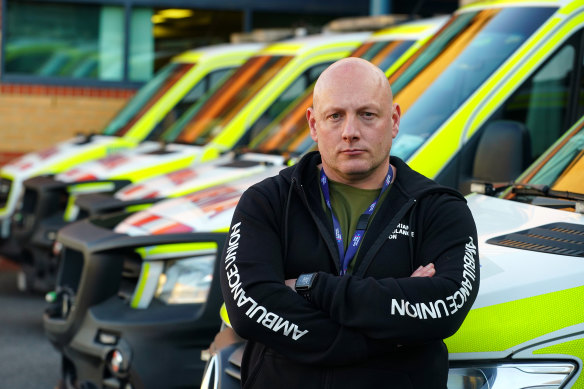
Victorian Ambulance Union secretary Danny Hill.Credit: Luis Enrique Ascui
But Hill says the anger from union members over the lack of support for a long-serving paramedic was white-hot.
“That was it,” Hill says. “We wouldn’t have been able to hold back a vote of no-confidence even if we wanted to. Paramedics are a spirited set of debaters, and there will be agreement and disagreement on a lot of things, but 98 per cent passing a no-confidence motion is almost unanimous. It was a pretty clear message.”
The no-confidence motion in Ambulance Victoria’s executive is yet another blow for the troubled emergency service.
It comes amid a protracted industrial dispute over pay and conditions, ramping for hours at hospitals, a dispatch system that paramedics say wrongly classifies minor incidents as code-one “lights and sirens” emergencies, and internal turmoil.
Six payroll department staff were suspended last month following allegations they fraudulently claimed overtime and were paid for shifts they did not work.
This also triggered an internal investigation into how details of the allegations were leaked to the media.
The latest quarterly health data reveals Ambulance Victoria failed yet again to meet its statewide target to respond within 15 minutes to 85 per cent of code-one emergencies. From April to June 2024, paramedics responded to just 64.2 per cent of “lights and sirens” cases in time as the service grappled with its busiest quarter on record.
This week, state parliament’s upper house endorsed a Liberal push to establish an inquiry into Ambulance Victoria.
“It’s an absolute mess,” says opposition health spokeswoman Georgie Crozier. “People trust the paramedics but not the reliability of them turning up. They think, ‘What do I do, do I drive myself?’”
Even Health Minister Mary-Anne Thomas has weighed in. Last month, she told reporters she was concerned about the excessive overtime paramedics are working, and says the pay dispute has dragged on for far too long.
Hill believes it is time for the state government to appoint an administrator or a new interim chief executive to the besieged service.
“Ambulance Victoria is in crisis,” he says. “It is very poorly led, it’s sinking. As far as the relationship with the workforce, you can’t rebuild the trust that’s lost. Too much has happened.”
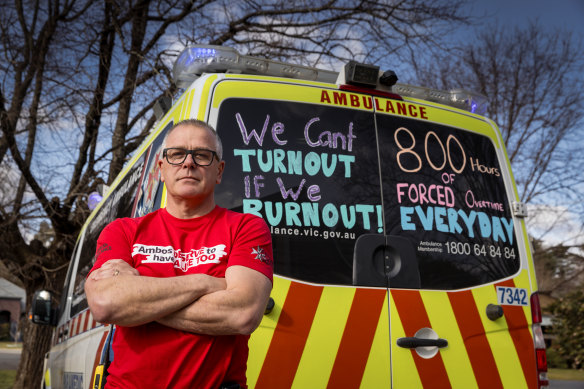
Paramedic Paul Stefaniak says the state needs to fix its flawed call-taking and dispatch system.Credit: Jason Robins
Paul Stefaniak, a paramedic from Victoria’s Hume region, believes the biggest issue for Ambulance Victoria is the state’s flawed call-taking and dispatch system.
Call-takers, who do not have medical training, follow an automated script, which can lead to ambulances being sent to minor incidents, placing significant strain on crews.
“The people who take the calls are so bound by the rules and regulations of their employer that they’re not allowed to vary from their scripts,” Stefaniak says.
“Because the system is so risk-averse, it over-triages everything. So we’re often sending ambulances to things that should not be responded to by paramedics, particularly not a lights-and-sirens response.”
This frustration was echoed by paramedics who spoke to The Age while their ambulances were ramped outside the Royal Melbourne Hospital.
They said ambulances could be diverted from a serious incident to someone with a minor ailment who had wrongly been classified as a code-one emergency – because there was a lot of blood, for example – which activates a lights-and-sirens response.
There have also been triple-zero callouts for toothaches, constipation, blocked ears and nosebleeds.
One paramedic told The Age: “If you’ve got somebody that’s had a fall and they’re on the ground and they’re clearly in pain because they’ve done a hip or neck or femur or something, that’s a code two – but we’re getting diverted to this person who is not breathing normally because they’re having a vomit because they’ve got gastro.
“It’s the poor old lady or gentleman on the ground that we really should be looking after. We know statistically hip fractures can end in death for that patient. So the longer they’re on the floor, certainly the worse their outcome is going to be.”
A source close to Ambulance Victoria said the organisation was grappling with an exodus of experienced staff, budgetary constraints and having to redesign its services after the pandemic.
He said one of the real frustrations was paramedics not finishing work on time, an issue exacerbated by ramping.
On Monday, August 12, there were at least 136 ambulances ramped at hospitals across Victoria, according to Hill.
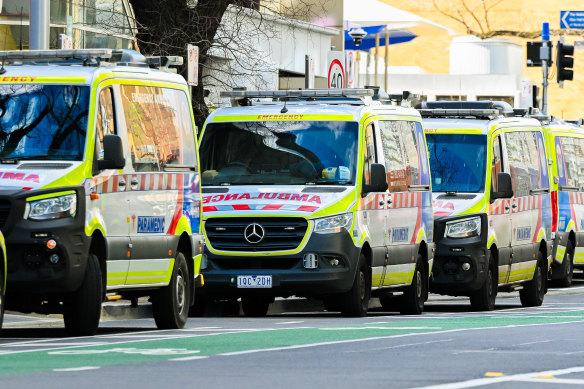
Ramped ambulances at Royal Melbourne Hospital on August 7.Credit: Joe Armao
“On Monday night, only 7 per cent of the fleet was available to respond to emergencies,” he says.
Paramedics often find themselves waiting with patients for hours in emergency department corridors as there is no one in hospitals to hand them over to.
When this happens at the end of their shift, it upends childcare arrangements and means they can’t go home to their families or catch up with friends.
“This is the challenge of ambulance crews being tied up at hospitals …ambulances need to be out on the road delivering care,” the source says.
The source said that a relatively new leadership team was trying to do its best in a very challenging environment.
He said chief executive Jane Miller, who took on the top job in January 2023, was Ambulance Victoria’s first appointed chief executive since its inception in 2008 who was not a paramedic or formerly employed by the emergency service.
Miller was previously the Department of Health’s deputy state controller of health service operations and held jobs at the Royal Children’s Hospital for 13 years, including as chief operating officer and acting chief executive.
The source says while this lack of operational experience at Ambulance Victoria meant Miller may not have the same rapport with staff, it also had advantages.
“She has fresh eyes and fresh ideas,” he says.
In the early 2020s, the Victorian Equal Opportunity and Human Rights Commission held a year-long investigation into reports of discrimination, sexual harassment, victimisation and bullying.
The commission found more than half of employees (52.4 per cent) said they had been bullied, nearly half (47 per cent) said they had experienced discrimination, and 33 reported pressure for sex or requests for sex acts at work.
It was also told that employees who fit “the rigid paramedic stereotypes (for example, men)” were more likely than those who did not – “for example, women and people from diverse backgrounds” – to be considered suitable for opportunities.
Ambulance Managers and Professionals Association director Scott Crawford points to the investigation, which occurred under the previous leadership, to illustrate what he calls a “toxic workplace culture”.
He said a “long and painful road” had led to his union – which represents managers and corporate staff – to also issue a vote of no-confidence in Ambulance Victoria’s leadership.
“There has been no proportionate increase in corporate and functionary staff in more than a decade – Ambulance Victoria is corroding and falling apart from within,” Crawford says, adding that staff felt their concerns were being ignored by senior management.
“Consultation at Ambulance Victoria is spiteful and tin-eared. The professionals we represent deserve to be listened to,” he says.
“Their views are ignored – despite the fact our members have intimate knowledge of how the service runs.”
Crawford also hit out at Ambulance Victoria’s handling of the investigation into the six employees accused of serious misconduct.
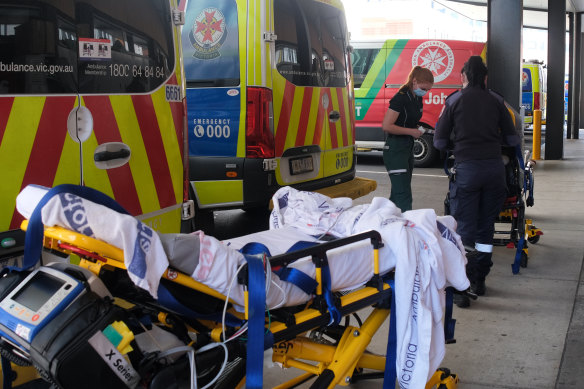
Paramedics are increasingly under the pump.Credit: Luis Ascui
He said senior people at Ambulance Victoria had leaked the information to the media, “prejudic[ing] their own investigation in search of a headline”.
“Our members are entitled to natural justice, procedural fairness and the presumption of innocence.”
Meanwhile, Miller says she is committed to rebuilding the trust of the workforce in the executive team.
“We are negotiating in good faith with our people and their bargaining representatives to deliver an enterprise agreement which is fair for all and acknowledges the significant value of our people,” she says.
“Our paramedics are working under enormous pressure, and we continue to prioritise work to address high levels of incidental overtime, fatigue and rostering challenges, improve call-taking and dispatch, and help our people finish their shifts on time.”
A government spokesman said Labor had introduced a range of initiatives to alleviate pressure on emergency departments and keep paramedics on the road. These include the Victorian virtual emergency department, priority primary care centres and Ambulance Victoria’s secondary triage and medium acuity transport service.
“We value the work that our paramedics do every day and the critical role they play in keeping Victorians healthy and safe.”
“Despite record demand, the average emergency department waiting time remains steady at 15 minutes, and all urgent patients are being seen immediately upon arrival.”
On Wednesday, Treasurer Tim Pallas confirmed that the government was close to reaching a deal with the paramedics.
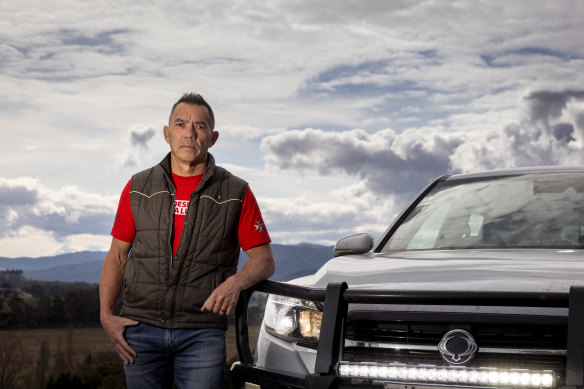
Jim Avard is questioning if he will get behind the wheel of an ambulance again.Credit: Jason Robins
But for Avard, it may all be too late. He can’t see himself back behind the wheel of an ambulance any time soon.
“As long as I’ve got this head mechanic to get my head right, I’m not sure what capacity I’ve got,” he says.
“To be honest, it’s a pretty deep-seated anger I’ve got. I’m glad they have apologised … but there’s been so much stuff that has been triggering since then.
“The pressures within the health system fall on the operational ambo. We’re the cannonball fired by Ambulance Victoria.”
Start the day with a summary of the day’s most important and interesting stories, analysis and insights. Sign up for our Morning Edition newsletter.